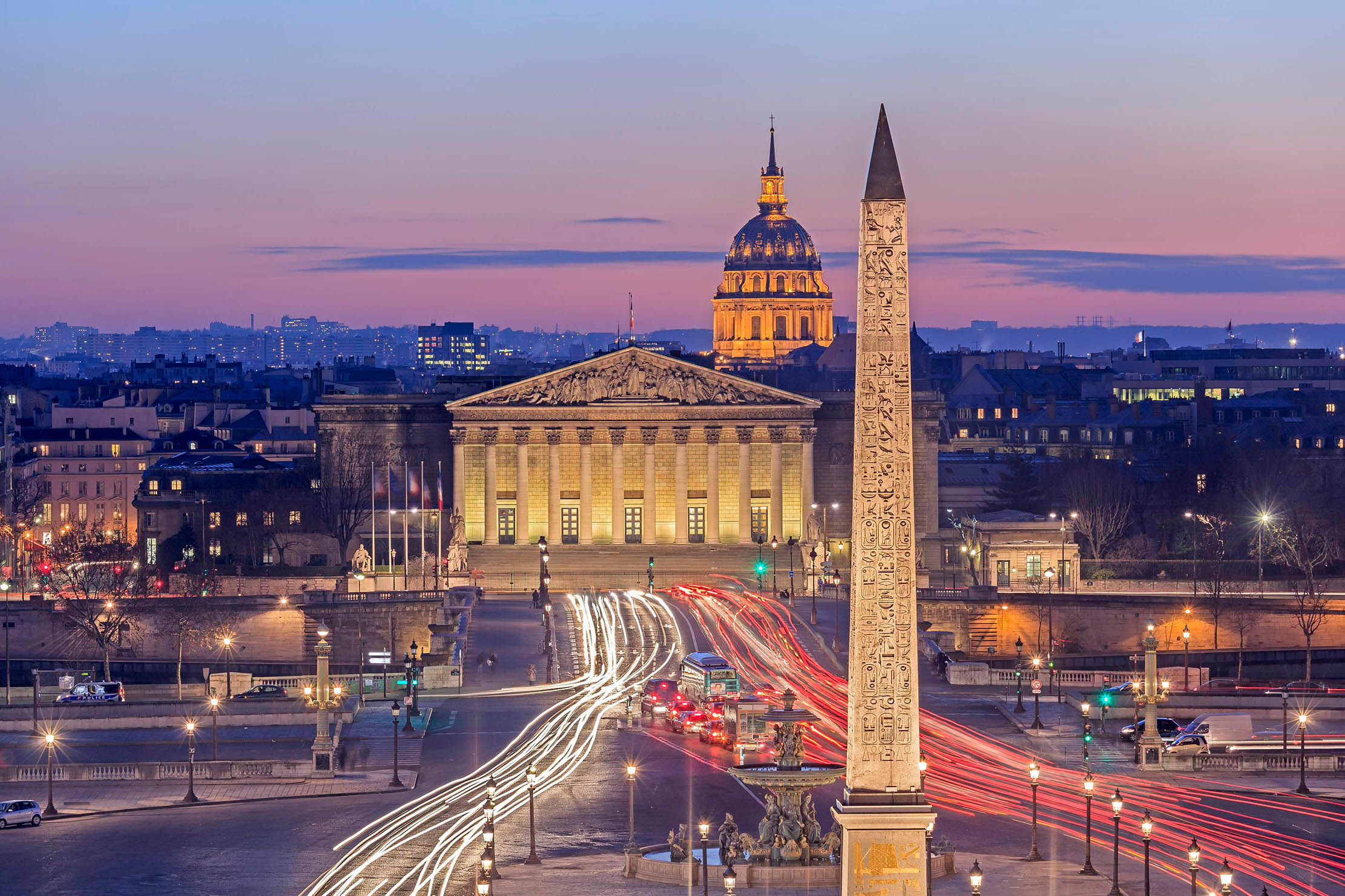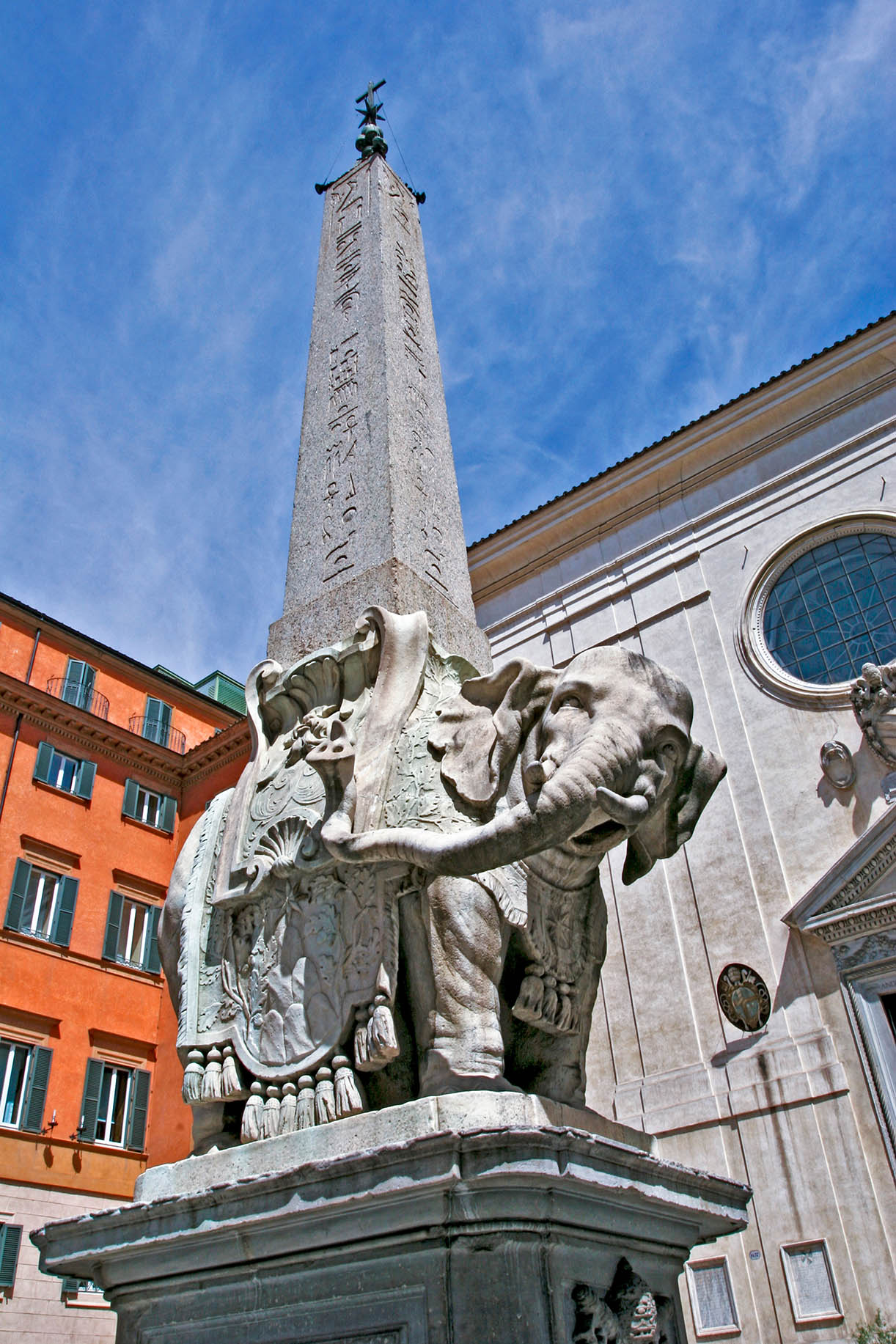Loyd Grossman: How obelisks became the ultimate war trophies, and carved out a niche as the marker of a great city
The first obelisk to be erected in Europe was a trophy of war. Loyd Grossman considers how these ancient monuments came to be understood and became the mark of every great city.

When Napoleon wished to carry out an ambitious tree-planting programme for Rome, he was firmly reminded by the sculptor Canova that ‘in Rome, we do not plant trees, we plant obelisks’. The planting of obelisks in Europe is a 2,000-year-old habit, started by the Emperor Augustus in his lust for conquest and self-commemoration.
In the year 10BC, Augustus ordered the removal of two obelisks, the oldest of which was then 1,300 years old, to Rome. These first obelisks were the ultimate war trophies, a physical celebration of the Roman conquest of Egypt. They demonstrated geopolitical control of the Eastern Mediterranean and, as importantly, a source of grain to feed Rome’s million-plus population.

The arrival of the obelisks in Rome was an unequivocal statement that Rome had now superseded the world’s longest-enduring civilisation. The moving of an obelisk is a tricky business. Stone is strong in compression and weak in tension: an upright obelisk is sturdy, an obelisk at any other angle is likely to crack or shatter.
Then there is their huge weight — each of Augustus’s two obelisks weighed more than 200 tons. Special ships had to be constructed to carry the monoliths across the Mediterranean and then, with little more than wooden rollers, ropes, pulleys and brute manpower, the obelisks were taken from Ostia to Rome and hauled upright.
The whole operation was a testimony to Roman skill and determination. One of the obelisks was installed to decorate the central reservation of the great stadium the Circus Maximus; the other became the gnomon or hour indicator of a huge sundial that, thanks to Rome’s soggy low ground, subsided and became hopelessly inaccurate within 30 years.
Augustus’s successors got the obelisk habit, too, bringing more back from Egypt to adorn temples and stadia. The centuries after the fall of Rome, the ruination of the city and its reduction to a small urban core and an abandoned hinterland were bad news for the obelisks, which fell and were often buried under the rubble of once grand buildings and the rising urban ground level.
The Vatican obelisk, 75ft of red granite kidnapped from the sacred Egyptian site of Heliopolis, was the only one to remain standing. Legends grew around it: the golden ball on its pinnacle was reputed to contain the ashes of Julius Caesar and it was thought that the obelisk’s survival was thanks to the fact that it had witnessed the martyrdom of Saint Peter. In 1586, the great counter- Reformation Pope, Sixtus V (reigned 1585–90) commanded the movement of the Vatican obelisk to the front of St Peter’s Basilica, where it remains today.
Exquisite houses, the beauty of Nature, and how to get the most from your life, straight to your inbox.
This uncouth and brutal man had an artist’s vision of how Rome should be. He began the process of using the ancient obelisks as grand signposts, erecting them in front of the great pilgrimage churches of Rome as sacred punctuation marks in the urban sprawl.Spectacular as their moving and re-erection was, they were only part of his comprehensive programme. ‘There are so many novelties, buildings, roads, squares, fountains, obelisks and other wonders which Sixtus V, God bless his soul, built to embellish this dry old lady,’ a contemporary wrote, ‘that thanks to that fiery and enthusiastic spirit, like a phoenix it was resurrected from the ashes into this New Rome.’ The work of moving the obelisks was widely publicised through engravings and was echoed in Protestant England.

Thus began the process of turning Rome into a modern city. Although there had been, and would be, other great builder popes, Sixtus was different in that he had an over-arching vision of how Rome should be organised that combined beautification and adornment with a hard-headed strategy for improving the flow of traffic and pedestrians.
In Renaissance and later Rome, obelisks began to be seen as much more than either ancient curiosities or reminders of the conquest of Egypt. Intellectuals and mystics alike increasingly regarded Ancient Egypt as a source of secret knowledge, an acceptable form of ‘paganism lite’, which influenced early Christianity. Consequently, Egyptian motifs and imagery could even be found in the heart of the Catholic Church: Pope Alexander VI commissioned Pinturicchio to adorn his private apartments with Egyptian-referenced frescoes in the 1490s. Of course, the Vatican collections contained, as they still do, a treasure trove of Egyptian sculpture.
The greatest fascination of all was with the hieroglyphic inscriptions found on sarcophaguses and many of the obelisks themselves. Unlocking the meaning of these hieroglyphs was regarded as the key to understanding Egyptian knowledge. Generations of scholars laboured in vain. The 16th-century Pierio Valeriano spent decades translating the hieroglyphs and got it all wrong.
One hundred years later, Alexander VII’s favourite house intellectual Athanasius Kircher, regarded by many of his contemporaries as the man who knew everything, produced spectacularly huge volumes on the subject with lavishly inaccurate translations. Kircher also felt that obelisks may have played a role in the diffusion of something he called ‘panspermia’, a sort of universal life force.
As did Sixtus, Kircher’s patron Alexander had a grand conception of Rome that involved the demolition of some ancient monuments, such as a 2nd-century triumphal arch that blocked traffic on the Via del Corso, and the loving restoration of others, including the Pyramid of Cestius tomb, which still greets visitors to Rome who arrive via the Porta San Paolo, a favoured route from the airport. Alexander reinforced the role of obelisks in the Roman cityscape, but only oversaw the erection of one, the obelisk carried on the back of Bernini’s elephant statue in the Piazza della Minerva.

The exhaustion of the Papal treasury and the increasingly fractious politics of the Italian peninsula brought the curtain down on the great era of Papal building projects, but the re-erection of ancient obelisks carried on. For example, in 1822, an obelisk was installed in the Borghese Gardens, rather sadly as an item of garden decoration rather than a major urban landmark. The last obelisk to be erected in Rome is the small and forlorn one by the central railway station that memorialises the ‘heroes of Dogali’, Italian soldiers killed during Italy’s cynical land grab of Ethiopia in 1887.
As the last of the Roman obelisks were planted, their desirability as symbols of metropolitan importance and sophistication grew elsewhere. Paris got its obelisk in the Place de La Concorde in 1833, not quite a gift from the Ottoman ruler of Egypt, Muhammad Ali, who was given an elaborate French clock in return. The obelisk remains standing; the clock broke down. London’s Cleopatra’s Needle was put into place on the Victoria Embankment in 1878 after numerous vicissitudes, including nearly sinking in the Bay of Biscay on its way from Egypt. Even the resourceful engineers of the Victorian age found obelisks challenging.
‘It would be absurd,’ an editorial in The New York Herald thundered, ‘for the people of any great city to hope to be happy without an Egyptian Obelisk. Rome has had them this great while and so has Constantinople. Paris has one. London has one. If New York was without one, all those great sites might point the finger of scorn at us and intimate that we could never rise to any real moral grandeur until we had our obelisk.’
New Yorkers must have heaved a sigh of civic relief when their own obelisk, which was also nicknamed ‘Cleopatra’s needle’ in an echo of ours on the Embankment, was unveiled in Central Park in 1881.

If the obelisk was a sign of moral grandeur, Rome was the morally grandest city in the world, with 13 standing obelisks. Even today, when Rome has lost its central role in what used to be called Western Civilisation, the obelisks of Rome play a defining role in the magnificence of a city that still has the air of being Caput Mundi, ‘the head of the world’.
Useless beauties, obelisks exemplify a somewhat forgotten determination to proclaim the importance of cities. Today, for the first time in history, half the world’s population is urban and the pandemic has caused many to question the very purpose and necessity of cities. It may be time to look at obelisks again.
‘An Elephant in Rome’ by Loyd Grossman is published by Pallas Athene at £19.99.

In Focus: David Adjaye and 'Making Memory', an exploration of the democratisation of the monument
David Adjaye's 'Making Memory' exhibition offers the rare chance to see buildings in the making and explore the working processes
Toby Keel is Country Life's Digital Director, and has been running the website and social media channels since 2016. A former sports journalist, he writes about property, cars, lifestyle, travel, nature.

